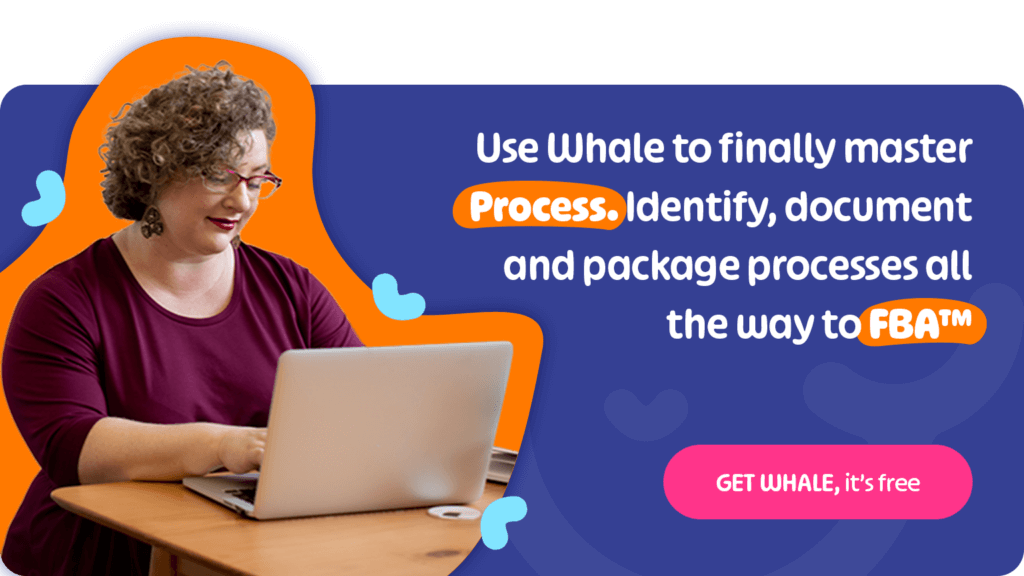We recently asked Rob Liddiard, Professional EOS Implementer, Managing Director of Mission Group to share his insights on the role of process in getting your startup acquired.
He shared his recent interview with Integrator and Operations Director, Meg Payne on the First-time Founders Podcast.
Why the EOS®️ Process Component™ matters for startups
Most founders yawn at the first mention of ‘process’, I certainly did at the outset of my entrepreneurial career.
But the reality is my last startup, Yapster (acquired in late 2022) wouldn’t have survived and found an exit had our Integrator and Operations Director, Meg Payne, not ensured that our Core Processes were documented and followed by all.
Meg recently joined me on my First-time Founders Podcast to discuss why EOS’s Process component matters for startups and how it contributed to Yapster’s success. We also spoke about how processes helped in successfully getting the company acquired.
Core Processes - A case in point from Yapster
Long before any talk of acquisition, Meg had already defined and refined Yapster’s core processes relating to each step of our customer journey, such as sales & marketing, customer operations, product, people and operations itself. Each process was well documented and allowed us to deliver consistent and competent customer service – and prevented us from going off track.
Our documented processes weren’t just dormant how-to’s tucked away in a forgotten Gdrive folder; they brought clarity to roles and created a platform for professional development. Many times we were able to delegate tasks and responsibilities from my Cofounder CEO seat all the way down to graduate-level colleagues via robust process management.
For example, our ‘Operations Executive’ seat was a graduate-level position which involved managing tens of new customer launches single-handedly and developing supporting levers for the full customer journey through business as usual, upselling and renewals. To put this in perspective, responsibility for Yapster’s customer journey was initially solely on my shoulders, only to overcompensate when we scaled by hiring too many heads in the Account Management and Customer Success teams. The overhiring here can be directly attributed to a lack of clarity around processes and workflows. The Process Component in EOS finally helped us find the right way forward.
But how did we document and establish processes which were meaningfully detailed, without becoming overwhelming and redundant? A key piece of advice that our Integrator Meg offered is that ‘you have to go into the exercise with the right mindset’, because it can be ‘very easy to be turned off from the initiative even before we begin because it’s an overwhelming scenario – thinking you need to write down every single thing about how the business works’. A key rule that she used in documenting Yapster’s processes was EOS’s 80/20 ‘key steps’ rule.
What is the 80/20 rule in relation to process?
In the startup game, time is our most precious resource.
The 80/20 rule acknowledges that 80% of your results should come from 20% of your effort.
This principle encourages organisations to identify and prioritise documenting the 20% of key steps in processes that deliver 80% of the desired output. By honing in on these vital processes, your organisation can streamline operations, increase efficiency, and maximise overall effectiveness.
This targeted approach enables leadership teams to allocate resources strategically and address core elements that drive success, ensuring that efforts are concentrated where they can make the most substantial difference in achieving an organisation’s objectives.
Confessions of a Visionary

This was an occasional source of (friendly) tension between me and Meg, as we strained to identify whether negative customer outcomes were the result of a process being broken, or simply not being followed.
After discussing in our regular Same Page meetings, 9 times out of 10 we’d conclude that the process wasn’t broken, it just wasn’t being followed – usually by me!!
Examples included when I would answer customer queries from my iPhone, rather than waiting to allow our operations executives to, or when I would seek to influence our product team to complete technical tasks ASAP rather than during allocated time windows. This would then impact on another product task needing to be completed. Looking back, I realise it was ridiculous to be actively undermining the supporting resource that I’d so longed for in our early days.
Although Meg led us operationally with great discipline, I’m proud that we also created a culture of proactive issue-solving in Yapster, which protected us against the potential tyranny of bad processes. For example, our standard 1:1s process included a key step for candid feedback on processes themselves; whether they were being followed, whether they were successfully addressing customer needs.
How Process helped Yapster get acquired
Meg was vital in documenting and establishing emerging processes which came under the spotlight once we started talking to potential acquirers, particularly relating to financial due diligence. These processes were fundamental in effective knowledge management and transfer between Yapster and our acquirer (which builds buyer confidence, reduces their perception of risk and both increases your company value and reduces the likelihood of your buyer getting ‘cold feet’).
Rapidly improving our financial processes was not an easy experience. We realised early on in our interactions with potential acquirers that most of our leadership team had been ‘abdicating’ (rather than delegating) responsibility for understanding and managing company finances to our Finance Director and outside accountants.
We were missing a sufficiently rich understanding of how money and resources moved through our company to be able to talk thoughtfully about our management. As a result, we added a monthly management accounts review as a recurring monthly Issue in our Level 10 meetings.
This simple housekeeping addition to Yapster’s financial process enabled our Leadership Team to talk confidently about Yapster’s P&L, Balance Sheet, Liabilities and answer any questions regarding Yapster’s accounts during the acquisition. I became a numerate Visionary and relished in the extra confidence that gave me!
Other benefits of getting your processes documented!
During our podcast sit down, Meg and I also reflected on how much smoother the transition post-transaction ultimately felt, thanks to our work on process management and documentation. We were able to transfer knowledge across all functions, including our marketing, sales, customer support, product and operations to allow our acquirer to deliver consistent and competent customer service in our absence. They were able to meet and fulfil the same expectations our customers had come to know when with Yapster.
Following Yapster’s approach to process also brings benefits beyond acquisition readiness. The most notable for Meg is creating a company that all colleagues (including founders) can take breaks from, without the company breaking!
In fact, getting the company ‘vacation ready’ is Meg’s secret trick to winning colleagues’ hearts and minds at the outset of a process transformation journey. Whilst your CTO might love the warm fuzzy feeling of being your company’s ‘key women/man’ most weeks a year, do they really want to take their laptop to the beach and leave their phone on loud overnight, every night? Assuming not, only process documentation can set them free!
Bottom line? Process is fundamental in geting your startup acquired
Process is fundamental in getting your startup aquired.
Establishing clear and streamlined processes within a startup not only enhances operational efficiency but also cultivates a sense of reliability and scalability. Potential acquirers often scrutinize the inner workings of a startup, and a robust process framework demonstrates the organization’s ability to deliver consistent results, mitigate risks, and adapt to changing circumstances. Moreover, a structured process helps in creating valuable intellectual property, well-documented procedures, and a coherent business model, making the startup more appealing to potential buyers.
Ultimately process provides a roadmap for growth, ensuring that the startup is poised for scalability, which is a significant factor for acquirers looking to expand their market presence or diversify their portfolio.
In essence, a well-crafted and disciplined approach to operations not only drives the startup’s success but also enhances its attractiveness to potential acquirers, facilitating a smoother transition and increasing the likelihood of a successful acquisition.







